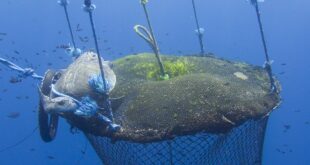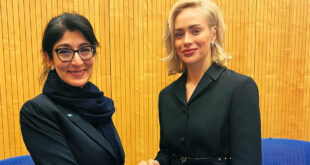 Space activities within the United Nations Member States are growing apace and the amount of space faring nations is increasing. Enabling these countries to find their path to space is a key part of the work of the United Nations Office for Outer Space Affairs (UNOOSA) which works to promote ‘international cooperation in the peaceful use and exploration of space science and technology for sustainable economic and social development’. The Office is on hand to offer help to Members that wish to establish legal and regulatory frameworks to enable them to become active in the space arena.
Space activities within the United Nations Member States are growing apace and the amount of space faring nations is increasing. Enabling these countries to find their path to space is a key part of the work of the United Nations Office for Outer Space Affairs (UNOOSA) which works to promote ‘international cooperation in the peaceful use and exploration of space science and technology for sustainable economic and social development’. The Office is on hand to offer help to Members that wish to establish legal and regulatory frameworks to enable them to become active in the space arena.
SpaceWatch.Global’s Torsten Kriening was fortunate enough to sit down with Markus Woltran, Programme Officer at UNOOSA, to talk about how space and the UN fit together, as well as how its activities and how space technology can enable the UN to fulfil its Sustainable Development Goals (SDGs).
How does space fit into the entire UN system?
If we look at the history of the UNOOSA office, it was created as a small group within the UN and was developed as a channel for the future development of space. It has a long history. It started with a legal discussion on outer space and provided a forum for exchange on international relations and international treaties for outer space. What’s interesting right now is that there’s an evolution occurring as we are now on the verge of the use of space technology for the implementation of our common goals and that is what the office is trying to facilitate and accommodate. We are trying to push the importance of space technology in the implementation of the UN Sustainable Development Goals (SDGs).
How does space impact on the Sustainable Development Goals? How can space be used to achieve these goals?
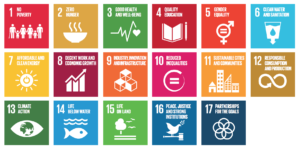 There are various clear examples of how space technology can be used and, if we look at the different goals and indicators, space technology can not only support the implementation of the SDGs but can also help in terms of monitoring and evaluation. Just recently, we had a co-operation where we looked at Earth Observation (EO) and the SDG indicators (which enable us to monitor progress, inform policy ad hold stakeholders accountable), and we found that that over 45% of the SDG goals indicators can actually be supported by EO – and this only refers to EO. If you take telecommunications and navigation and apply them to the whole portfolio, you would come up with a much higher number.
There are various clear examples of how space technology can be used and, if we look at the different goals and indicators, space technology can not only support the implementation of the SDGs but can also help in terms of monitoring and evaluation. Just recently, we had a co-operation where we looked at Earth Observation (EO) and the SDG indicators (which enable us to monitor progress, inform policy ad hold stakeholders accountable), and we found that that over 45% of the SDG goals indicators can actually be supported by EO – and this only refers to EO. If you take telecommunications and navigation and apply them to the whole portfolio, you would come up with a much higher number.
It is important that we use space to support our colleagues in the UN system and in cooperation with partners from all over the world to implement the goals. It is also critical that we raise awareness that developing countries use space technology to overcome their own barriers and challenges and we must support the implementation of space technology in developing countries as well.
So all of the 17 SDGs will be supported by space in some way?
It is fair to say that all of the 17 SDGs could benefit in one way or the other from space technology – definitely.
What is the High Level Forum (HLF) and what is it needed for?
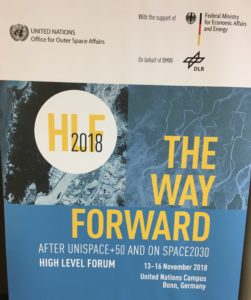 The HLF dates back to the year 2015 when the UN received the mandate to work on the celebration of the first global space conference within the UN, which happened in 1968. In June 2018, we celebrated the 50th anniversary. The Office recognised the need for a platform or Forum that would bring together different views from governments, space agencies, NGOs and civil society so we could pull together and compile the broadest possible view. The HLF was intended to be the platform where these views were all pulled together. The first HLF we initiated centred discussion around the four pillars of space: Space Economy, Space Society, Space Accessibility and Space Diplomacy. In the past 2 years we have been progressing in the discussions around these four pillars.
The HLF dates back to the year 2015 when the UN received the mandate to work on the celebration of the first global space conference within the UN, which happened in 1968. In June 2018, we celebrated the 50th anniversary. The Office recognised the need for a platform or Forum that would bring together different views from governments, space agencies, NGOs and civil society so we could pull together and compile the broadest possible view. The HLF was intended to be the platform where these views were all pulled together. The first HLF we initiated centred discussion around the four pillars of space: Space Economy, Space Society, Space Accessibility and Space Diplomacy. In the past 2 years we have been progressing in the discussions around these four pillars.
Can you elaborate more on the Four Pillars? These are very broad terms.
Yes, they are very broad terms. I think the space sector as a whole is also very broad. It addresses a few things. On the one hand, it’s important to find a language that is understood by not only policy makers, but those in the wider space sector. It’s a tool for us to use to sell and raise awareness about the importance of space technology. In the preparation of UNISPACE +50 especially, there were 7 different priorities identified which ranged from international approaches and responses to the space weather threat to global health discussions to how to develop a resilient society in the 21st century. The thematic topics were negotiated in the committee of Peaceful Uses for Outer Space and we saw the need to raise awareness and to make it more understandable and attractive for the wider public. We realised we needed to frame it in a different way and that’s one of the reasons why we came up with the four pillars. It helped us to structure the HLF and also structure our outcome documents and to use as a benchmark for evolution.
How do you involve those who are not yet actively interested in space? Do you involve them?
At the UN it’s one of our main goals to bridge the divide. In the past, we have heard about a technology divide and there is certainly a space divide that differentiates space faring nations from non-space faring nations, or nations which are the on the verge of becoming space faring nations. This is definitely one of the goals, and for the UN it is one of the strengths that we can offer. We bring together various actors to support non-faring space nations, enabling them to become space faring nations. It is about making use of space on the ground – about capacity building and how data is used, its access to data. We at the UN can facilitate and support not only the access, but we can ensure that the access has benefits. We are supporting the capacity building on the ground so the data is used for peaceful purposes.
Can you tell us about Space 2030?
To explain this I need to take one step back. During the negotiations in preparation for UNISPACE +50 the Member States decided that there would be a shared vision document and the UNOOSA organised different global conferences on the various topics for the preparation of UNISPACE+50. We arrived at UNISPACE+50 with an understanding of the broader space community and where they think the work of the office could lead. The negotiations at UNISPACE+50 ended in a Resolution where the Member States gave themselves a 2-year period to negotiate a Space 2030 agenda. Right now, (which is the interesting part for the international community) there is a coming together of the various committees we are offering – sub committees on legal affairs, science and technology, as well as peaceful uses of outer space. There will be negotiations on a Space 2030 agenda. The next two years will be exciting and demanding for the international community.
What will be the goals for Space 2030?
The entire process is completely in the hands of the Member States. The UNOOSA is supporting the functions through our Secretariat. They have to be elaborated and negotiated on by the Member States.
What do the HLFs achieve?
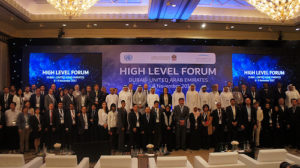 The interesting part about the HLF is that we try to feed in technical discussion and combine it with the policy discussion. We have experts from all around the world with different expertise and from different countries to contribute to technical point of view. We have discussion around everything from space weather threats to emergency response to questions on global health and global innovation and exploration discussions. We also facilitate high level discussions around the four pillars and the outcomes of these talks are recommendations and observations which will be brought to the attention of the committee on the Peaceful Uses of Outer Space. How they will be transformed into any action is up to the Member States.
The interesting part about the HLF is that we try to feed in technical discussion and combine it with the policy discussion. We have experts from all around the world with different expertise and from different countries to contribute to technical point of view. We have discussion around everything from space weather threats to emergency response to questions on global health and global innovation and exploration discussions. We also facilitate high level discussions around the four pillars and the outcomes of these talks are recommendations and observations which will be brought to the attention of the committee on the Peaceful Uses of Outer Space. How they will be transformed into any action is up to the Member States.
What’s on the agenda in 2019 in respect to the series of the High Level Forum?
We are delighted that Austria will host next year’s HLF. We will then have another cycle of discussions on the Space 2030 agenda and how it interlinks with the discussion around the HLF. We see an evolution in the participants of the HLFs. In our last HLF we had over 308 participants which is a clear sign of its success. We will take it further and we will offer the framework for further discussion and the inputs of as broad spectrum of potential participants.

Bio: Markus Woltran is a Programme Officer in the Office of the Director of the United Nations Office for Outer Space Affairs (UNOOSA). He supports the Director of the Office in a broad variety of tasks and engages in diverse strategic and policy relevant areas such as #space4SDGs, interagency affairs, UNOOSA strategic directions and operational priorities (SDOP) as well as planning and evaluation efforts. Additionally, he supports key activities and leads the organisation of international conferences, workshops, expert meetings and symposia. Markus is also in charge of the office’s engagement on the implementation of a dedicated ‘Space for Women’ – Project. He also supports different UNOOSAs outreach and awareness raising activities as well as contributes to papers and other written products and publications. Markus has an experience as Associate Programme Officer in the UNOOSA dedicated programme on Space-Based Information for Disaster Management and Emergency Response (UN-SPIDER) as well as in the United Nations Information Service (UNIS) and in the Austrian Foreign Ministry. Markus holds a master’s Degree in political science.
SpaceWatch.Global thanks Markus Woltran of UNOOSA for the interview.



